
Cuenca: A Timeless Treasure in Spain
Discover Cuenca, Spain's hidden gem, where medieval history, stunning architecture, and natural wonders converge in a unique and captivating experience.
Cuenca, nestled in the heart of Spain, is a city that effortlessly blends history, art, and natural beauty. Known for its medieval charm, Cuenca's old town is a UNESCO World Heritage Site. The city's Hanging Houses (Casas Colgadas) are an iconic sight, perched precariously on cliffs overlooking the Huécar River. These unique structures, along with the cobbled streets and ancient buildings, transport visitors back in time. Beyond its historical allure, Cuenca boasts modern attractions and a vibrant cultural scene. The city is home to several museums, including the Museum of Spanish Abstract Art, which houses an impressive collection of contemporary works. For nature enthusiasts, the nearby Enchanted City (Ciudad Encantada) offers a surreal landscape of limestone formations that will leave you in awe. Cuenca's culinary scene is equally captivating, offering a taste of traditional Castilian cuisine. Local dishes such as morteruelo (a rich game meat pâté) and ajoarriero (a cod and garlic dish) provide a delightful gastronomic experience. With its mix of old-world charm and modern vibrancy, Cuenca is a destination that promises unforgettable memories.
Local tips in Cuenca
- Visit the Hanging Houses early in the morning to avoid crowds and get the best light for photos.
- Wear comfortable shoes as Cuenca's old town has many steep and cobbled streets.
- Explore the Enchanted City on a guided tour to fully appreciate the geological formations.
- Try local specialties at traditional restaurants for an authentic taste of Castilian cuisine.
- Check the local calendar for festivals and events, such as the Holy Week processions, which offer a deep insight into local culture.
Cuenca: A Timeless Treasure in Spain
Cuenca, nestled in the heart of Spain, is a city that effortlessly blends history, art, and natural beauty. Known for its medieval charm, Cuenca's old town is a UNESCO World Heritage Site. The city's Hanging Houses (Casas Colgadas) are an iconic sight, perched precariously on cliffs overlooking the Huécar River. These unique structures, along with the cobbled streets and ancient buildings, transport visitors back in time. Beyond its historical allure, Cuenca boasts modern attractions and a vibrant cultural scene. The city is home to several museums, including the Museum of Spanish Abstract Art, which houses an impressive collection of contemporary works. For nature enthusiasts, the nearby Enchanted City (Ciudad Encantada) offers a surreal landscape of limestone formations that will leave you in awe. Cuenca's culinary scene is equally captivating, offering a taste of traditional Castilian cuisine. Local dishes such as morteruelo (a rich game meat pâté) and ajoarriero (a cod and garlic dish) provide a delightful gastronomic experience. With its mix of old-world charm and modern vibrancy, Cuenca is a destination that promises unforgettable memories.
When is the best time to go to Cuenca?
Iconic landmarks you can’t miss
Casas Colgadas de Cuenca
Discover the architectural wonder of the Casas Colgadas in Cuenca, a UNESCO World Heritage Site showcasing stunning medieval craftsmanship.

La Ciudad Encantada
Experience the breathtaking rock formations and diverse wildlife at La Ciudad Encantada, a natural wonder nestled in the heart of Spain's Cuenca region.

Parador de Cuenca
Discover the enchanting blend of history and luxury at the Parador de Cuenca, a stunning hotel with breathtaking views and exquisite dining options.

Cuenca Cathedral
Discover the stunning Gothic architecture and rich artistic heritage of Cuenca Cathedral in the heart of Spain's beautiful Cuenca.

San Pablo Bridge
Experience the charm of Cuenca at San Pablo Bridge, a historic marvel offering stunning views and rich cultural heritage.

Castillo de Cuenca
Explore the rich history and breathtaking views at Castillo de Cuenca, a captivating historical landmark and museum in the heart of Spain's heritage.

Science Museum of Castilla La Mancha
Discover the interactive wonders of the Science Museum of Castilla La Mancha in Cuenca, where science meets fun for all ages.

Torre de Mangana
Explore the stunning Torre de Mangana in Cuenca, a historical landmark showcasing the city's rich heritage and breathtaking views.

Spanish Abstract Art Museum. Juan March Foundation
Discover the vibrant world of modern art at the Spanish Abstract Art Museum in Cuenca, a cultural gem showcasing abstract masterpieces and stunning architecture.

Plaza de España
Discover the historical charm of Plaza de España in Cuenca, a beautiful landmark surrounded by stunning architecture and vibrant gardens.

Puente de San Antón
Discover the breathtaking Puente de San Antón: an architectural gem and scenic viewpoint in Cuenca, Spain.

Mirador del Cerro del Socorro
Discover the stunning vistas of Cuenca from the Mirador del Cerro del Socorro, an essential stop for breathtaking views and unforgettable memories.

Plaza De Toros de Cuenca
Discover the historic Plaza De Toros de Cuenca, a stunning bullring that embodies the vibrant culture and traditions of Spain's bullfighting heritage.

Museo de la Semana Santa de Cuenca
Explore the fascinating traditions of Semana Santa at Cuenca's local history museum, where rich culture and art come alive.

Muralla y Arco de Bezudo
Explore the Muralla y Arco de Bezudo in Cuenca, a historic landmark that showcases the beauty and rich heritage of this enchanting Spanish city.

Unmissable attractions to see
Calderon Park
Discover the tranquil beauty and cultural richness of Calderon Park in Cuenca – a serene escape in the heart of Ecuador's historic city.

Mercado 10 de Agosto
Discover the colorful Mercado 10 de Agosto in Cuenca, a vibrant market filled with local crafts, delicious foods, and authentic Ecuadorian culture.

Madre Park
Explore the lush landscapes of Madre Park, a tranquil oasis in Cuenca, perfect for relaxation, recreation, and cultural experiences.

El Paraíso Park
Explore the lush landscapes and cultural vibrancy of El Paraíso Park in Cuenca, a perfect retreat for nature lovers and families seeking tranquility.

Ingapirca Archaeological Complex
Explore the majestic Ingapirca Archaeological Complex, Ecuador's largest Incan ruins, and uncover the secrets of ancient civilizations amidst stunning landscapes.

Museo Paleontológico de Cuenca
Explore the wonders of prehistoric life at the Museo Paleontológico de Cuenca, a captivating natural history museum in the heart of Spain.
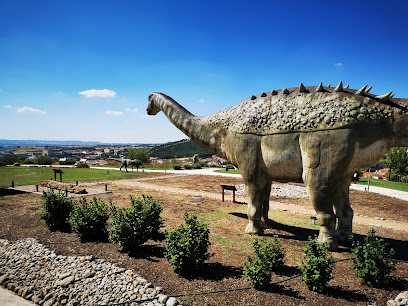
Mercado de Artesanias Rotary
Explore the vibrant Mercado de Artesanías Rotary in Cuenca, where local crafts meet authentic Ecuadorian flavors in a culturally rich atmosphere.

Parque Nacional Cajas
Discover the breathtaking beauty of Parque Nacional Cajas, Ecuador's jewel of nature with stunning landscapes, diverse wildlife, and serene glacial lakes.

Pumapungo Museum
Explore the vibrant culture of Ecuador at Pumapungo Museum, where history and art come to life amidst stunning gardens and ancient ruins.

Puente Roto
Discover the enchanting Puente Roto in Cuenca, a historical landmark that blends stunning architecture with breathtaking natural beauty.

Chordeleg Park
Experience tranquility and cultural richness at Chordeleg Park, a peaceful retreat in the heart of Ecuador's charming town.

Catedral de la Inmaculada Concepción
Explore the breathtaking Catedral de la Inmaculada Concepción in Cuenca, Ecuador—an architectural gem that embodies rich history and vibrant culture.

Multicines | Mall del Río
Discover the ultimate cinematic experience at Multicines in Mall del Río, Cuenca, featuring the latest films in a comfortable and modern setting.

Laguna de Busa
Explore Laguna de Busa: an idyllic retreat in San Fernando, Ecuador, offering breathtaking views, outdoor adventures, and a serene escape into nature.

Plaza de las Flores
Discover the vibrant Plaza de las Flores in Cuenca, Ecuador – a floral paradise filled with colorful blooms, crafts, and local culture.

Essential places to dine
Restaurante Recreo Peral
Experience authentic Spanish cuisine at Restaurante Recreo Peral in Cuenca – where every meal is a celebration of local flavors.

Grotte del Huécar
Experience unparalleled dining at Grotte del Huécar, a remarkable gastropub set within a stunning cave in Cuenca, Spain.

Mesón Jose
Discover Mesón Jose: A must-visit tapas bar in Cuenca for an authentic taste of Spanish culture and cuisine.

Mesón El Bodegón
Savor authentic Castilian cuisine at Mesón El Bodegón in Cuenca—where tradition meets flavor in every dish.

Bar-Restaurante Las Brasas
Discover exquisite grilled delights at Bar-Restaurante Las Brasas in Cuenca - where tradition meets flavor in every bite.
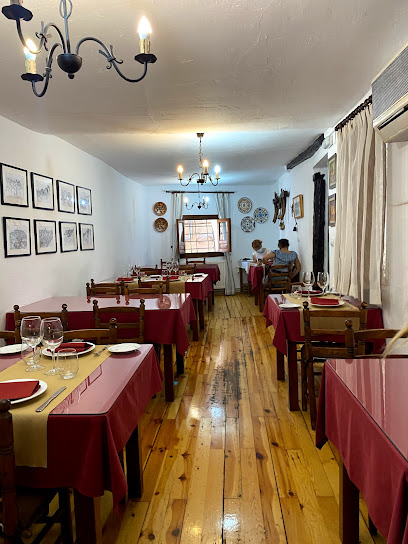
La Ponderosa
Experience authentic Spanish tapas at La Ponderosa in Cuenca - where every bite tells a story.

Restaurante María Morena
Experience authentic Spanish cuisine at Restaurante María Morena in Cuenca—where tradition meets modern culinary artistry.

Restaurante Raff San Pedro
Experience culinary excellence at Restaurante Raff San Pedro in Cuenca – where exquisite Mediterranean flavors meet elegant dining.

María Mandiles
Experience authentic Spanish flavors at María Mandiles in Cuenca - where tradition meets taste in a cozy setting.

Restaurante El Torreón
Experience authentic Spanish cuisine at Restaurante El Torreón in Cuenca - a culinary gem offering delightful dishes and an inviting atmosphere.

Mesón El Caserío
Experience authentic Spanish barbecue at Mesón El Caserío in Cuenca - where every meal is a celebration of flavor and tradition.

Restaurante Sidrería La Figal
Experience the best of Asturian cuisine at Restaurante Sidrería La Figal – where every meal is a celebration of tradition and flavor.
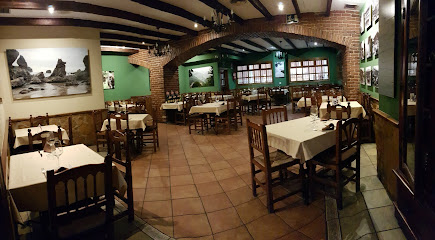
Restaurante Pícaro Tapas y Copas
Experience authentic Spanish tapas in Cuenca at Restaurante Pícaro Tapas y Copas - where flavor meets vibrant atmosphere.

Mesón Darling
Discover authentic Spanish dining at Mesón Darling in Cuenca – where tradition meets flavor in every dish.

Restaurante La Venta
Discover the rich flavors of Castilian and Mediterranean cuisine at Restaurante La Venta in Cuenca - where tradition meets taste.

Markets, malls and hidden boutiques
MANGO
Explore MANGO in Cuenca for the latest in women's fashion, offering stylish selections that enhance your travel experience and personal style.

Centro Comercial Cuatro Caminos
Discover Cuenca's best shopping experience at Centro Comercial Cuatro Caminos, featuring diverse stores, dining, and entertainment options for all.

Bottega Verde Cuenca
Explore Bottega Verde Cuenca for exquisite fragrances and beauty products that reflect Italian elegance in the heart of Spain's historic city.

Pekoe Cuenca
Explore Pekoe Cuenca for an exquisite selection of natural goods, from artisanal chocolates to premium teas and spices, all in the heart of Cuenca.

Aromas
Explore Aromas in Cuenca: Where unique artisanal fragrances meet the charm of this historic city for a memorable shopping experience.

Parfois
Explore the trendy world of Parfois in Cuenca, where fashion accessories meet Spanish style, perfect for every fashion lover.

El Mazal
Discover unique souvenirs and quality art supplies at El Mazal, Cuenca's charming gift shop that showcases local craftsmanship and creativity.

DELOREAN
Explore Delorean in Cuenca for a delightful shopping experience filled with vintage collectibles and unique memorabilia.

Mirando pa Cuenca - Artículos de regalo
Explore Mirando pa Cuenca for authentic gifts and local crafts that embody the charm and cultural heritage of Cuenca, Spain.

Peteranne
Explore the elegance of Peteranne, Cuenca's premier dress store, offering exquisite styles for every occasion in a charming boutique atmosphere.

Lenceria Doliche
Discover the elegance of lingerie shopping in Cuenca at Lenceria Doliche, where style meets comfort and exceptional service awaits.

Orocash CUENCA
Explore Orocash in Cuenca for exquisite jewelry that reflects the region's artistry and craftsmanship, perfect for a unique travel keepsake.

Natura
Explore Natura in Cuenca - your go-to gift shop for unique souvenirs and local crafts that embody the spirit of Spain.

Villa Cora Boutique
Explore Villa Cora Boutique in Cuenca for unique artisanal treasures and a taste of local craftsmanship.
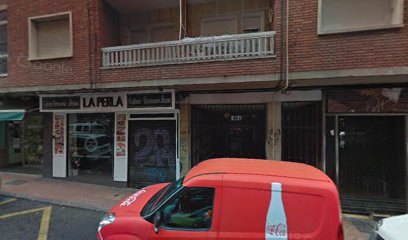
Lencería y Corsetería La Palma
Explore exquisite lingerie collections at Lencería y Corsetería La Palma in Cuenca, where elegance meets personalized shopping experience.
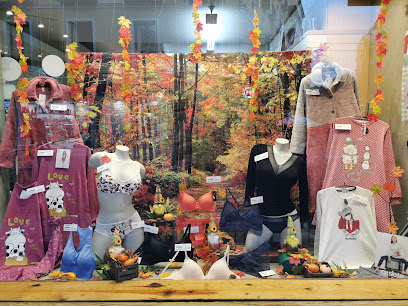
Essential bars & hidden hideouts
Grotte del Huécar
Experience the extraordinary Grotte del Huécar, a gastropub nestled in a stunning cave, serving exquisite local dishes in a unique ambiance.
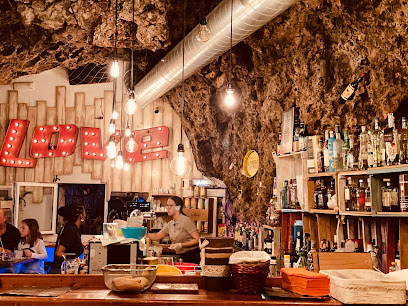
La Ponderosa
Experience the heart of Spanish cuisine at La Ponderosa, Cuenca's top destination for delicious tapas and vibrant atmosphere.

Restaurante Pícaro Tapas y Copas
Discover the vibrant flavors of Cuenca at Restaurante Pícaro Tapas y Copas, where authentic tapas meet a lively atmosphere.

La Ronería De La Habana
Discover La Ronería De La Habana, a bustling gastropub in Cuenca, offering exquisite tapas and a diverse beer selection in a vibrant atmosphere.

Taberna Jovi
Discover Taberna Jovi: Cuenca's top cocktail and tapas bar, where tradition meets innovation in every delicious bite and sip.
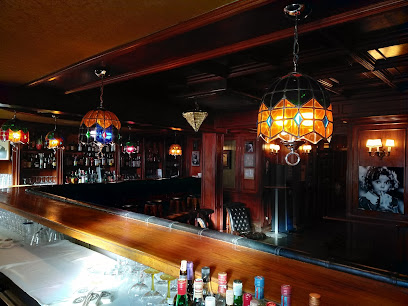
Bogart
Discover the lively essence of Cuenca at Bogart, a vibrant pub and lounge offering exceptional drinks and a welcoming atmosphere.

Los Clásicos
Experience the vibrant nightlife of Cuenca at Los Clásicos, a top pub offering a friendly atmosphere and diverse drink selection.

Pub La Edad de Oro Cuenca
Discover the lively spirit of Cuenca at Pub La Edad de Oro – a hub for great drinks, tapas, and local camaraderie.

The Big Red Bus
Experience the vibrant nightlife of Cuenca at The Big Red Bus, a lively pub and nightclub known for its affordable drinks and fun atmosphere.
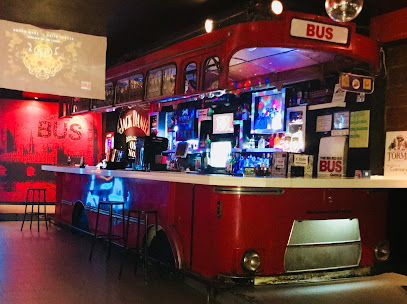
Lolo
Discover the charming Lolo bar in Cuenca, where local flavors meet a cozy atmosphere for an unforgettable experience.
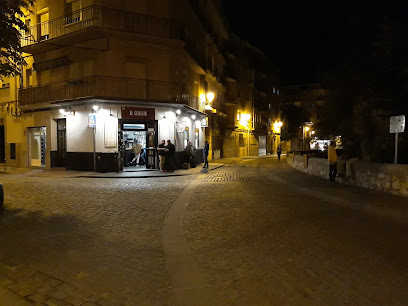
Pub Del Huécar
Discover the vibrant atmosphere and exquisite beer selection at Pub Del Huécar, the heart of Cuenca's nightlife.

Pub Los Elefantes
Experience the vibrant atmosphere and diverse drink selection at Pub Los Elefantes, Cuenca's favorite lounge for relaxation and socializing.

Bandera Negra Cuenca Rock Pub
Discover the vibrant nightlife at Bandera Negra Cuenca Rock Pub, where live music and a welcoming atmosphere create unforgettable moments in Cuenca.

La Mina Music Bar
Experience Cuenca's nightlife at La Mina Music Bar, a vibrant piano bar featuring live performances, excellent cocktails, and a lively atmosphere.

Pub BACCUS
Discover the lively ambiance of Pub BACCUS in Cuenca, where great drinks and friendly vibes create unforgettable nightlife experiences.

Local Phrases
-
- HelloHola
[oh-la] - GoodbyeAdiós
[ah-dee-ohs] - YesSí
[see] - NoNo
[no] - Please/You're welcomePor favor/De nada
[por fah-vor/deh nah-dah] - Thank youGracias
[grah-thyahs] - Excuse me/SorryPerdón/Lo siento
[pair-dohn/loh see-ehn-toh] - How are you?¿Cómo estás?
[koh-moh ehs-tahs] - Fine. And you?Bien. ¿Y tú?
[byen. ee too] - Do you speak English?¿Hablas inglés?
[ah-blahs een-glays] - I don't understandNo entiendo
[noh ehn-tyen-doh]
- HelloHola
-
- I'd like to see the menu, pleaseMe gustaría ver la carta, por favor
[meh goos-tah-ree-ah vehr lah kahr-tah, por fah-vor] - I don't eat meatNo como carne
[noh koh-moh kahr-neh] - Cheers!¡Salud!
[sah-lood] - I would like to pay, pleaseMe gustaría pagar, por favor
[meh goos-tah-ree-ah pah-gahr, por fah-vor]
- I'd like to see the menu, pleaseMe gustaría ver la carta, por favor
-
- Help!¡Ayuda!
[ah-yoo-dah] - Go away!¡Vete!
[veh-teh] - Call the Police!¡Llama a la policía!
[yah-mah ah lah poh-lee-see-ah] - Call a doctor!¡Llama a un médico!
[yah-mah ah oon meh-dee-koh] - I'm lostEstoy perdido
[ehs-toy pair-dee-doh] - I'm illEstoy enfermo
[ehs-toy ehn-fehr-moh]
- Help!¡Ayuda!
-
- I'd like to buy...Me gustaría comprar...
[meh goos-tah-ree-ah kohm-prahr] - I'm just lookingSolo estoy mirando
[soh-loh ehs-toy mee-rahn-doh] - How much is it?¿Cuánto cuesta?
[kwan-toh kwehs-tah] - That's too expensiveEso es demasiado caro
[eh-soh ehs deh-mah-see-ah-doh kah-roh] - Can you lower the price?¿Puedes rebajar el precio?
[pweh-dehs reh-bah-hahr ehl preh-see-oh]
- I'd like to buy...Me gustaría comprar...
-
- What time is it?¿Qué hora es?
[keh oh-rah ehs] - It's one o'clockEs la una
[ehs lah oo-nah] - Half past (10)Y media (10)
[ee meh-dee-ah (diez)] - MorningMañana
[mah-nyah-nah] - AfternoonTarde
[tahr-deh] - EveningNoche
[noh-cheh] - YesterdayAyer
[ah-yehr] - TodayHoy
[oy] - TomorrowMañana
[mah-nyah-nah] - 1Uno
[oo-no] - 2Dos
[dohs] - 3Tres
[trehs] - 4Cuatro
[kwah-troh] - 5Cinco
[theen-koh] - 6Seis
[seys] - 7Siete
[syeh-teh] - 8Ocho
[oh-choh] - 9Nueve
[nwah-veh] - 10Diez
[dee-ehs]
- What time is it?¿Qué hora es?
-
- Where's a/the...?¿Dónde está...?
[dohn-deh ehs-tah] - What's the address?¿Cuál es la dirección?
[kwal ehs lah dee-rehk-syon] - Can you show me (on the map)?¿Puedes mostrarme (en el mapa)?
[pweh-dehs mohs-trar-meh (ehn ehl mah-pah)] - When's the next (bus)?¿Cuándo es el próximo (autobús)?
[kwan-doh ehs ehl proh-ksy-moh (ow-toh-booce)] - A ticket (to ....)Un billete (a ....)
[oon bee-yeh-teh (ah)]
- Where's a/the...?¿Dónde está...?
History of Cuenca
-
Cuenca, located in the heart of Spain, was founded by the Moors in the 8th century. Originally established as a fortress town, it served as a strategic military outpost due to its elevated position on a steep promontory. The Moors built impressive defenses and water management systems, remnants of which can still be seen today.
-
In 1177, King Alfonso VIII of Castile captured Cuenca from the Moors in a pivotal moment during the Reconquista. The city's strategic importance was solidified under Christian rule, and it became a key stronghold in the region. The Christian reconquest led to the construction of important religious buildings, including the famous Cuenca Cathedral, which began in the late 12th century.
-
During the medieval period, Cuenca flourished as a center of textile production, particularly wool, which brought significant wealth to the city. The prosperity of this era is reflected in the construction of grand mansions and public buildings, many of which still stand. The intricate network of medieval streets and alleys in the old town harks back to this time of economic and cultural growth.
-
The Renaissance era brought further architectural advancements to Cuenca, with the construction of notable buildings such as the Casas Colgadas (Hanging Houses). These homes, precariously perched on the edge of cliffs, are a symbol of Cuenca and an excellent example of the ingenuity and aesthetic sensibilities of the time. The city's architecture from this period reflects a blend of Gothic, Renaissance, and Mudéjar styles.
-
The 19th and early 20th centuries saw a decline in Cuenca's traditional industries, leading to economic challenges. However, this period also sparked a movement towards the preservation of Cuenca's historical heritage. Efforts to protect and restore its unique architecture and cultural landmarks helped transform Cuenca into a beloved destination for history enthusiasts and tourists alike.
-
In 1996, Cuenca's historic walled town was declared a UNESCO World Heritage Site. This recognition underscored the city's historical and architectural significance, boosting its profile on the global stage. Today, Cuenca seamlessly blends its rich past with modern amenities, offering visitors a unique glimpse into Spain's diverse cultural and historical tapestry.
Cuenca Essentials
-
Cuenca is located in the autonomous community of Castilla-La Mancha, Spain. The nearest major airport is Adolfo Suárez Madrid-Barajas Airport in Madrid, approximately 165 kilometers away. From Madrid, you can take a high-speed AVE train from Atocha Station to Cuenca's Fernando Zóbel Station, which takes about 50 minutes. Alternatively, you can drive from Madrid to Cuenca, which takes roughly 1.5 to 2 hours by car through the A-3 and A-40 highways.
-
Cuenca is a small city, and many of its attractions are within walking distance. For longer trips or to explore the surrounding areas, local buses and taxis are readily available. The city also has a local train station, Cuenca-Fernando Zóbel, which connects to regional and national destinations. Renting a car can be a convenient option for exploring the countryside and nearby towns.
-
The official currency in Spain is the Euro (EUR). Credit and debit cards are widely accepted in hotels, restaurants, and shops in Cuenca. However, it is advisable to carry some cash, especially for smaller establishments, local markets, and for tips. ATMs are available throughout the city, making it easy to withdraw cash if needed.
-
Cuenca is generally a safe city for tourists. However, as with any travel destination, it is advisable to take standard precautions. Avoid walking alone at night in unfamiliar areas and keep an eye on your belongings in crowded places. There are no specific high-crime areas targeting tourists, but it is always best to stay vigilant and aware of your surroundings.
-
In case of emergency, dial 112 for immediate assistance, which is the general emergency number in Spain for police, fire, and medical services. Cuenca has a local police station and several medical facilities, including the Virgen de la Luz Hospital. It is recommended to have travel insurance that covers medical emergencies. For minor health issues, there are pharmacies throughout the city where you can purchase over-the-counter medications.
-
Fashion: Do dress modestly when visiting religious sites. Avoid wearing overly casual or revealing clothing. Religion: Do respect local customs and traditions. When visiting churches, avoid loud conversations and flash photography. Public Transport: Do be respectful and give up your seat to elderly passengers. Don't eat or drink on public transport. Greetings: Do greet people with a handshake or a friendly 'Hola.' Eating & Drinking: Do try local delicacies like 'morteruelo' and 'alajú.' Don't refuse hospitality, as it is considered impolite.
-
To experience Cuenca like a local, visit the local markets such as Mercado Municipal de Abastos, where you can buy fresh produce and traditional Spanish goods. Engage with locals, as they are often friendly and willing to share stories about the city's history and culture. Don't miss visiting the iconic Hanging Houses (Casas Colgadas) and the Cuenca Cathedral. For a unique experience, take a stroll along the Huécar River and explore the natural beauty of the nearby Enchanted City (Ciudad Encantada).
Trending Landmark in Cuenca
-
Casas Colgadas de Cuenca
-
La Ciudad Encantada
-
Parador de Cuenca
-
Cuenca Cathedral
-
San Pablo Bridge
-
Castillo de Cuenca
-
Science Museum of Castilla La Mancha
-
Torre de Mangana
-
Spanish Abstract Art Museum. Juan March Foundation
-
Plaza de España
-
Puente de San Antón
-
Mirador del Cerro del Socorro
-
Plaza De Toros de Cuenca
-
Museo de la Semana Santa de Cuenca
-
Muralla y Arco de Bezudo
Nearby Cities to Cuenca
-
Things To Do in Macas
-
Things To Do in Loja
-
Things To Do in Guayaquil
-
Things To Do in Ambato
-
Things To Do in Salinas
-
Things To Do in Tena
-
Things To Do in Manta
-
Things To Do in Quito
-
Things To Do in Piura
-
Things To Do in Mindo
-
Things To Do in Otavalo
-
Things To Do in Ibarra
-
Things To Do in Chiclayo
-
Things To Do in Pasto
-
Things To Do in Trujillo













